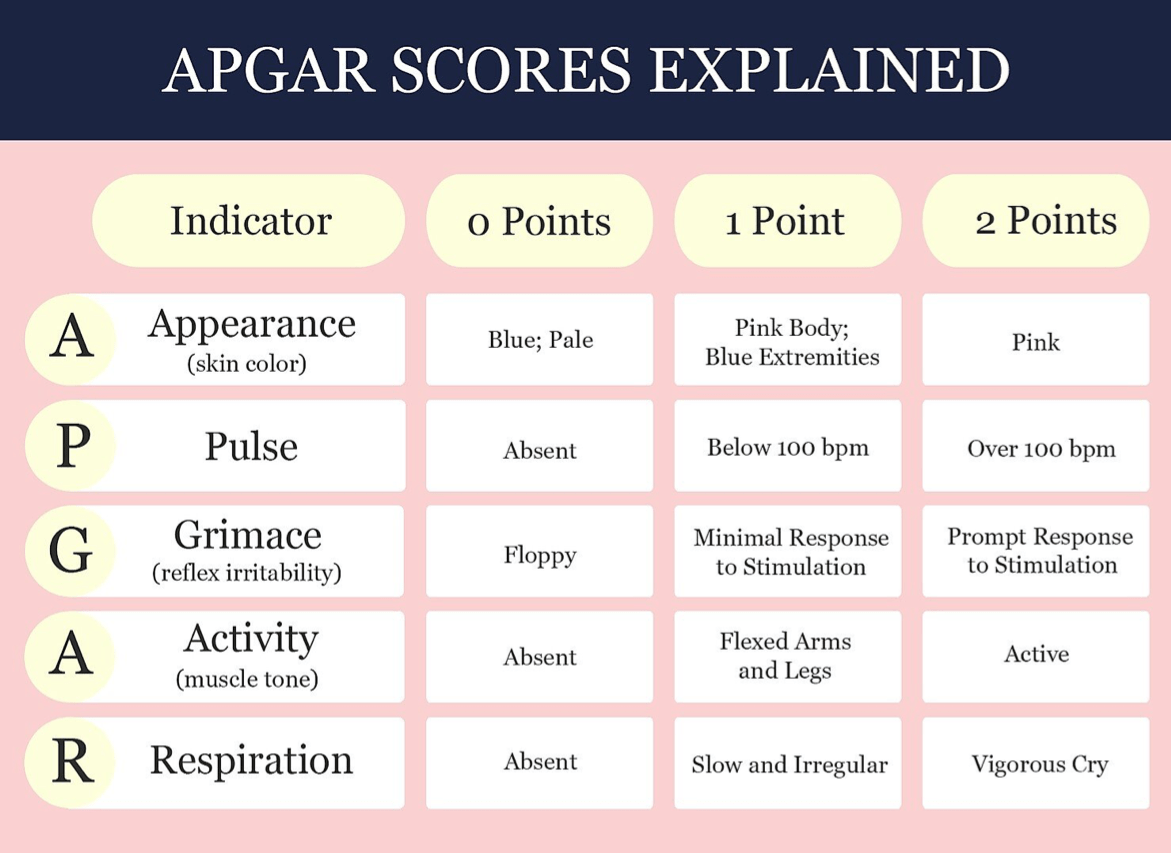Name the three components of the Pediatric Assessment Triangle.

Name three medications that may be given to a patient experiencing a severe asthma attack
Albuterol
DuoNeb (Albuterol & Atrovent/Ipratropium Bromide)
Dexamethasone
Epinephrine 1:1000
Magnesium
You are hanging out in your backyard with an adult friend and they collapse in front of you. They are pulseless and apneic. No one else is home. What should you do FIRST in helping them?
Call 911 for help.
Name four common medications given to a patient experiencing chest pain
Aspirin
Nitroglycerin
Oxygen
Fentanyl
What do you call the report given to the hospital over a radio or cell phone during transport?
HEAR Report
Hospital Emergency Ambulance Report
You respond on a 4 year old child who fell out of a second story window onto grass below. The parents do not believe the child lost consciousness after the fall. The child is moderately upset but has no visible trauma and their vital signs are all within normal limits. What is an important consideration when dealing with this patient, specifically with all pediatric patients, that will guide how you take care of this patient?
Pediatric patients are able to compensate for longer periods than adult patients and tend to crash very quickly - their vital signs may appear stable longer giving a false sense of security. Do not find reassurance in the child's present condition - given the mechanism of injury, this child should be treated as a critical patient.
Name 3 kinds of breath sounds you may hear upon auscultation
Stridor
Wheezing
Rales
Ronchi
Crackles
Vesicular
Pleural rub
Absent
What is the ratio of compressions to breaths for two-rescuer CPR for an 8 year old child.
15:2
What is the name/dose of a medication that may be used for an adult experiencing a hypoglycemic emergency who is unable to eat/drink and we are not able to establish an IV for?
Glucagon - 1mg IM
Protocol Book 20.130
What size IV catheter would be appropriate for a trauma patient with substantial blood loss?
14GA or 16GA x2
Name three things we carry in our ambulance that are unique in helping us care for pediatric patients?
Pedi-mate securement device
Broselow tape
Pediatric sized equipment
Toys/stickers
Pediatric kit
You are working a cardiac arrest call of a small child who drowned while swimming in Fishhawk Lake. No ALS providers are on scene yet, there are multiple EMTs and the airway needs secured. You estimate the child to be approximately 30 pounds in weight. What size I-Gel would be most appropriate for this patient?
 I-gel Size 2, small pediatric 10-25kg, 22-55lbs
I-gel Size 2, small pediatric 10-25kg, 22-55lbs
Protocol Book 30.072
Name the two kinds of rhythms that may be defibrillated during cardiac arrest
Ventricular tachycardia
Ventricular fibrillation
What three medications do we keep in the locked medication safe on the ambulance?
Fentanyl
Versed
Ketamine
An adult patient has burns on their chest, abdomen, back, head and groin. What percent of their body is burned?
Protocol Book 10.040
At what age in Oregon is a child able to consent for their own medical treatment?
15 years old
Name four contraindications to the use of CPAP.
1. Respiratory arrest
2. Non-cooperative patient
3. Suspected pneumothorax
4. Hemodynamically unstable
5. Inability to maintain a mask seal
6. Active vomiting
7. Under age of 12
Name five potential reversible causes of sudden cardiac arrest.
- Hypovolemia
- Hypoxia
- Hydrogen ion excess (acidosis)
- Hypoglycemia
- Hypokalemia
- Hyperkalemia
- Hypothermia
- Tension pneumothorax
- Tamponade – Cardiac
- Toxins
- Thrombosis (pulmonary embolus)
- Thrombosis (myocardial infarction)
Versed/Midazolam - 2.5-5mg IV/IO, repeat every 5 minutes
 What do you see in this EKG strip and what might it indicate?
What do you see in this EKG strip and what might it indicate?
This EKG strip is showing ST-elevation and could indicate the patient is having a myocardial infarction (STEMI) otherwise known as a heart attack.
Name all five components of an APGAR score

You are on scene assisting a Paramedic perform a rapid sequence endotracheal intubation of a patient in respiratory failure.
List the four medications in order, along with their doses, that you would give this patient as part of the intubation procedure.
Etomidate
Succinylcholine
Fentanyl
Versed
 You have an adult patient who is pulseless, not breathing in cardiac arrest. This rhythm has been shown on the monitor for several minutes and has not responded to defibrillation, Epinephrine or first-line antidysrhythmic (in this case, Amiodarone). What other medication should be considered for this patient?
You have an adult patient who is pulseless, not breathing in cardiac arrest. This rhythm has been shown on the monitor for several minutes and has not responded to defibrillation, Epinephrine or first-line antidysrhythmic (in this case, Amiodarone). What other medication should be considered for this patient?
Hint: This is an irregular form of ventricular tachycardia also called Torsades de Pointes
Magnesium sulfate - 2g IV/IO over 1-2 minutes
You are called to the residence of a 21 year old female patient who weighs approximately 65kg is undergoing treatment for cancer and is possibly having a stroke or seizure. Her family stated she had been vomiting a lot from the chemotherapy and had been prescribed an anti-emetic called Metoclopramide and had been taking it for a few days when she started acting funny while at home. The video shows what she looked like when you arrive on scene. What treatment can we give in the field that may resolve this reaction? If the treatment is a medication, what dose?
Hint: As the title of the video states, the patient is experiencing a dystonic reaction
Besides managing the patient's ABCs, diphenhydramine - 50mg IV/IM
Name 20 medications we carry on the ambulance - no protocol books allowed!!
Refer to Protocol Book table of contents Page 1&2